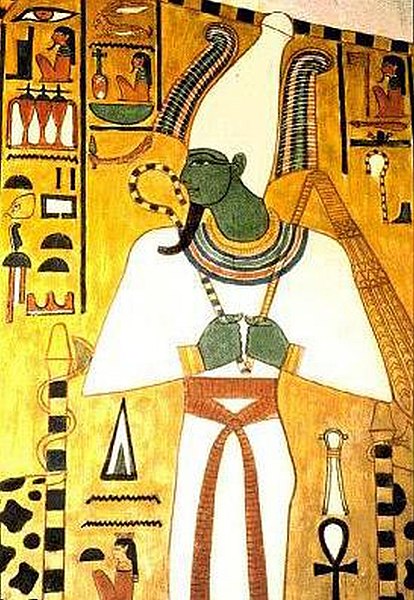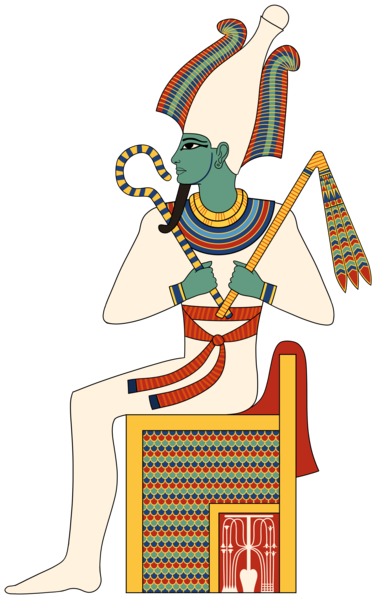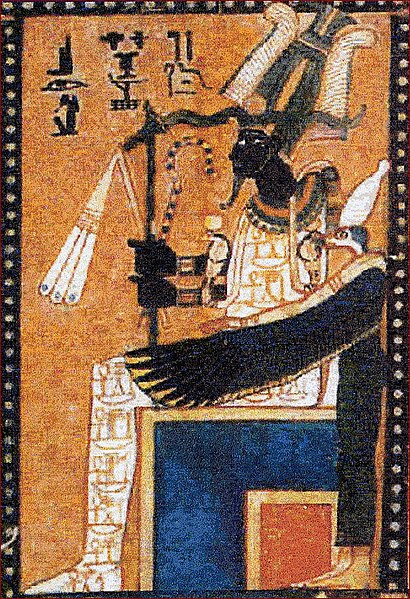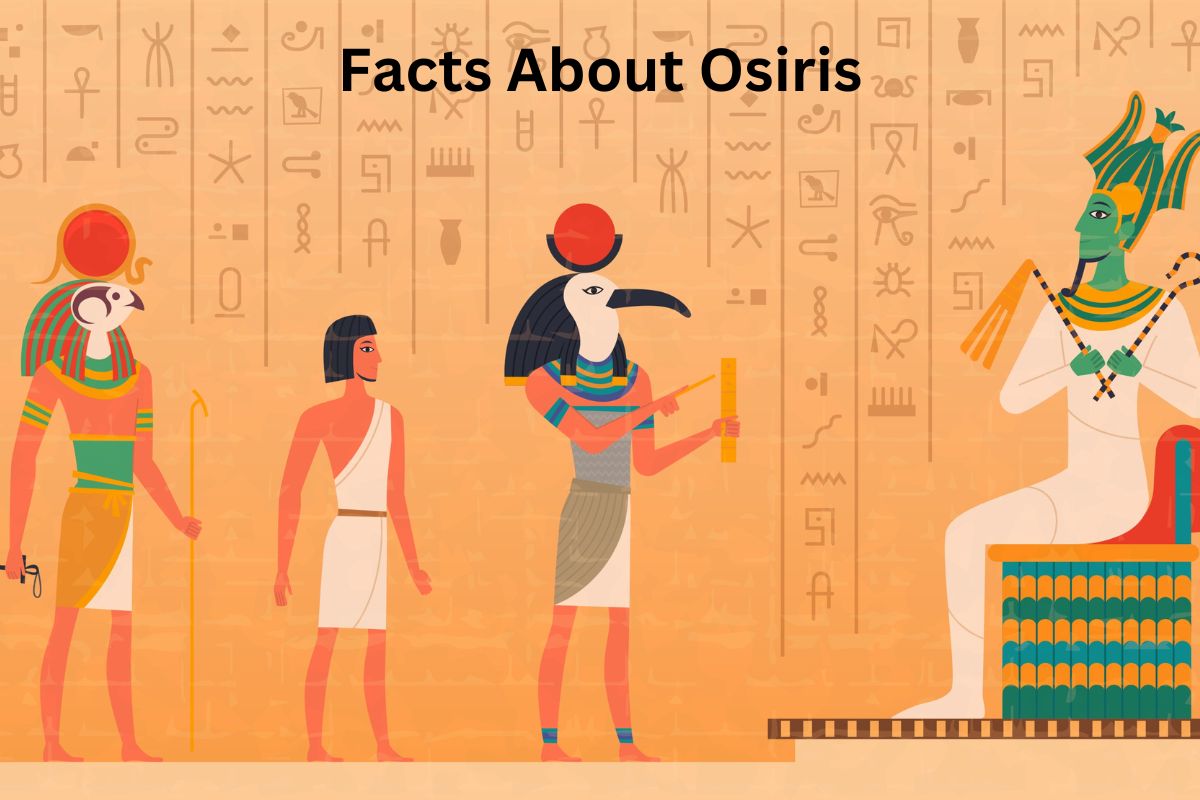Osiris was a significant deity in ancient Egyptian religion and mythology, worshiped as the god of the afterlife, fertility, and agriculture. He was usually depicted as a green-skinned man wearing a white robe and a crown with two tall plumes.
Osiris was the husband of his sister Isis and the father of Horus. His story is perhaps the most famous in Egyptian mythology, which tells how he was killed by his brother Set, and his body was cut into pieces and scattered all over Egypt.
However, Isis, with the help of other gods, was able to collect the pieces of his body and reassemble him, thus bringing him back to life. After his resurrection, Osiris became the king of the underworld and judge of the dead.
His cult was widespread throughout ancient Egypt, and many festivals and ceremonies were held in his honor, including the Osiris Mysteries, a series of rituals performed to ensure the dead would be reborn in the afterlife.
Osiris Facts
1. Osiris was one of the most important gods in ancient Egypt
Osiris was one of the most important gods in ancient Egyptian religion, considered to be the god of the afterlife, fertility, and agriculture.
He was often associated with the Nile River, which was considered to be his bloodstream. He was also considered the lord of the dead and the judge of souls in the underworld.
2. Osiris was usually depicted as a green-skinned man
Osiris was usually depicted as a green-skinned man wearing a white robe and a crown with two tall plumes.

The green color symbolized rebirth, and the white robe represented his role as a judge in the afterlife.
The two plumes represented the ostrich feathers that he wore in his crown, which were said to symbolize truth and justice.
3. Osiris and Isis were considered the king and queen of the afterlife
Osiris was the husband of his sister Isis, who was also a goddess in ancient Egyptian mythology. Together, they were considered the king and queen of the afterlife.
Osiris was also the father of Horus, the falcon-headed god who was associated with the sky and the pharaohs.
4. The cult of Osiris was centered in Abydos
The cult of Osiris was centered in Abydos, a city located in Upper Egypt. A great temple was built in his honor there, and it became a place of pilgrimage for many ancient Egyptians.

However, his cult spread throughout Egypt and beyond, and he was worshiped by both common people and royalty.
5. The most famous myth about Osiris tells how he was killed by his brother Set
The most famous myth about Osiris tells how he was killed by his brother Set, who was jealous of his power and wanted to take over as king of the gods.
Set tricked Osiris into entering a coffin, which he then sealed and threw into the Nile River. The coffin eventually washed up on the shores of Byblos, where it was discovered by the local king.
Set then retrieved the coffin and cut up Osiris’ body into 14 pieces, which he scattered all over Egypt to prevent his resurrection.
6. Isis helped to recover his body
Isis, with the help of other gods, was able to collect the pieces of Osiris’ body and reassemble him, thus bringing him back to life.
This act of resurrection became one of the most important myths in ancient Egyptian religion and was central to the belief in the afterlife.
7. Osiris became the king of the underworld and judge of the dead
After his resurrection, Osiris became the king of the underworld and judge of the dead.

He was depicted as a mummified figure holding a crook and flail, symbols of his power over agriculture and the land.
He was also associated with the annual flooding of the Nile River, which was seen as a symbol of his resurrection and the rebirth of life.
8. Many festivals and ceremonies were held in honor of Osiris
Many festivals and ceremonies were held in honor of Osiris, including the Osiris Mysteries. These were a series of rituals performed to ensure the dead would be reborn in the afterlife.
The mysteries were held in the city of Abydos and were open to all Egyptians, regardless of their social status. The ceremonies involved the reenactment of the myth of Osiris and the gathering of his body parts.
The goal was to allow the participants to experience the resurrection of Osiris and to assure their own resurrection in the afterlife.
9. Osiris was associated with the annual flooding of the Nile River
Osiris was also associated with the annual flooding of the Nile River, which was seen as a symbol of his resurrection and the rebirth of life.
The Nile River was believed to be his bloodstream, and its annual flood was seen as a sign of his power over agriculture and fertility.
The floods deposited rich silt on the banks of the river, which allowed crops to grow and flourish.
10. Osiris was associated with farming
Osiris was also credited with teaching the Egyptians how to farm and cultivate the land. He was seen as a wise and just ruler who brought prosperity and abundance to the land.
The ancient Egyptians believed that by honoring Osiris and following his teachings, they would be rewarded with a bountiful harvest and a good life.
11. Osiris was often depicted with a crook and flail
Osiris was often depicted with a crook and flail, symbols of his power over agriculture and the land.
The crook represented his role as a shepherd and protector of his people, while the flail represented his power over the harvest and the land.
These symbols were also associated with his role as a judge in the afterlife, representing his ability to protect and guide the souls of the deceased.
12. The cult of Osiris declined in popularity during the Christian era
The cult of Osiris declined in popularity during the Christian era, but his legacy continued to influence Egyptian culture and religion for centuries.
The myths and stories associated with Osiris were still told and retold, and his image and symbolism were still used in art and architecture.
Some scholars believe that Osiris was even incorporated into the Christian story of Jesus, as both figures were believed to have died and been resurrected.
13. Osiris was sometimes associated with the constellation of Orion
Osiris was sometimes associated with the constellation of Orion, which was said to represent his body in the sky.
The three stars in Orion’s belt were said to represent the three pieces of Osiris’ body that were still missing after his resurrection.
The constellation was also associated with the annual flooding of the Nile, which was seen as a sign of Osiris’ power over the land.
